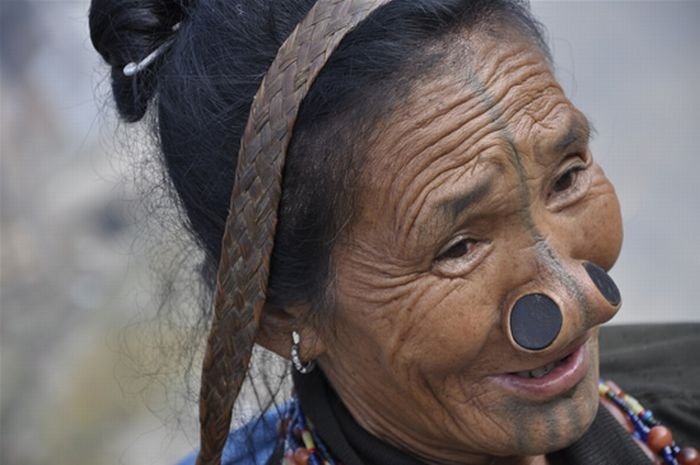|
|
Nose Plugs Of The Apatani Women
|
One of their oral accounts speaks of their migration from the extreme north of Subansiri and Siang areas following the rivers of Kurung and Kiimey. These oral accounts are usually presented in the form of folk tales such as the miji and migung. These accounts on many occasions are supported by landmarks which still exist on the migratory paths of the Apatanis. At the small village of Yangte in Kurung Kumey district, for example, is a stone beside which the Apatanis held a high-jump competition on their way to the present habitat. Therefore, these oral accounts have substance but need corroboration by anthropological and scientific evidence.
The miji is a collection of religious chants performed by priests who preside over the sacrifices of mithuns, cows, chickens and pigs during various rituals. A religious song, which may be sung from ten minutes to twelve hours, accompanies all these ritual performances which describes the previous interactions with the spirits or gods, locally known as wui, the content of which explains the origin of the myths among others. The migung is more realistic; it is narrated in prose, and the stories within it explain the origins of the Apatani people.
These folk tales include legendary places as well as recent events, such as the downfall of a 19th-century ne'er-do-well. In these two folk tales, both the ritual chants and the prose narrations speak of Abotani, who is reputed to be the original ancestor of the Apatani and the other tribes in central Arunachal Pradesh. These tribes encompass the Tani group, comprising of the Apatanis, Nyishis, Sulungs or Puroiks, Hill Miris, Tagins, Adis and Mishmis.
The first contact with the Europeans occurred in 1897, when British officials came to stay in the valley for two days; six similar brief visits were later held between the 1920s and 1930s. In 1944, after a temporary government outpost was set up by an anthropologist-administrator, the Apatani came in contact with minimal government presence for the first time. When a second, permanent outpost was constructed by the Assam Rifles in 1948, stationed there to protect the land, the Apatanis attacked. The officer in charge retaliated by burning two of their villages.
|
|









